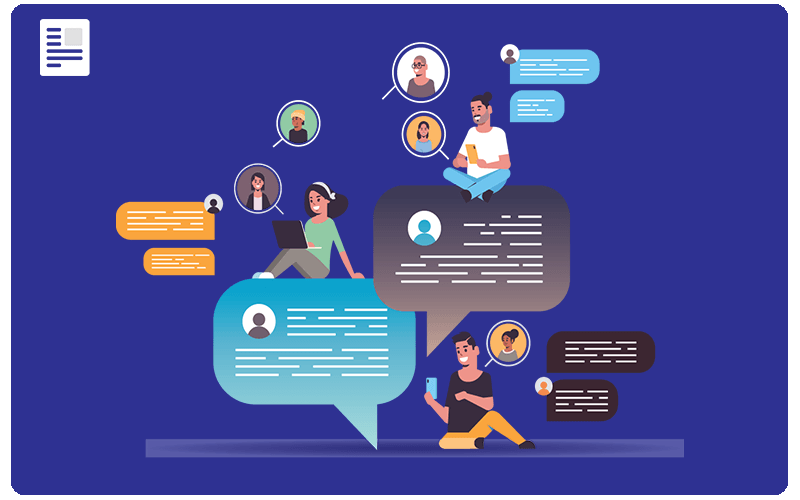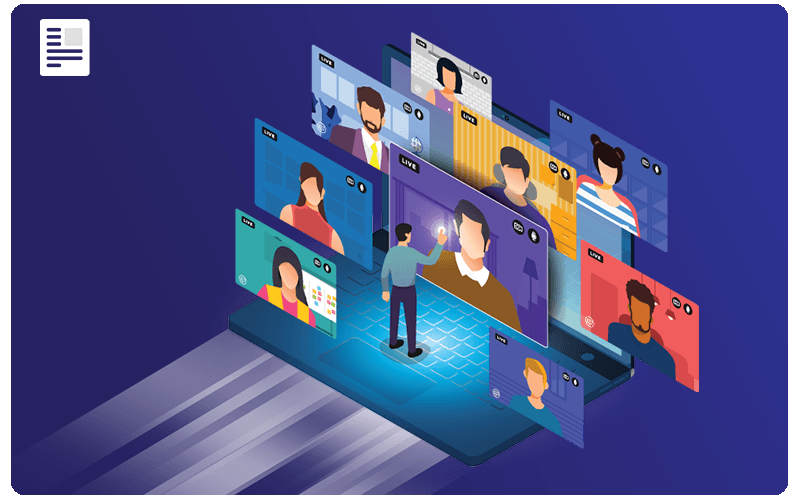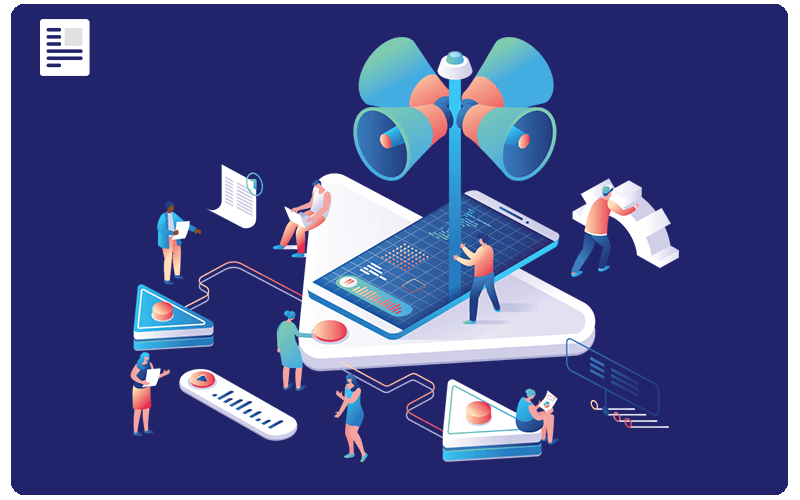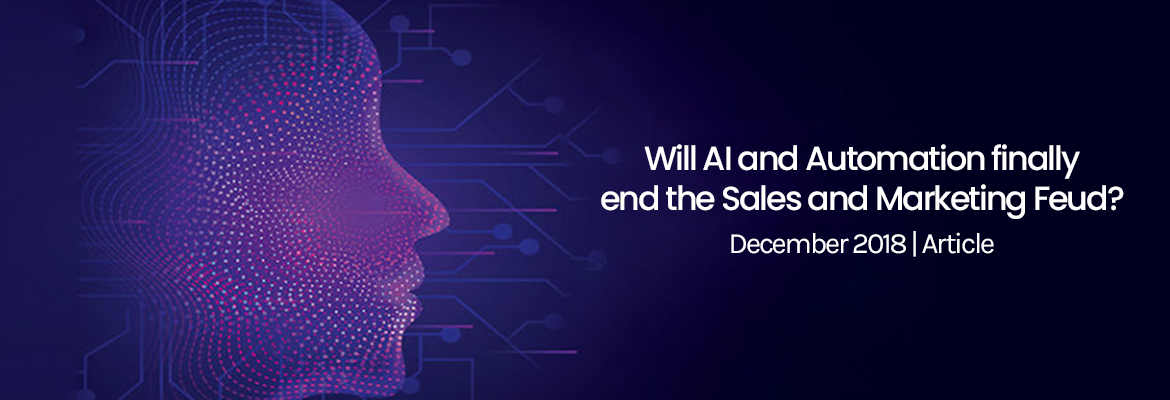
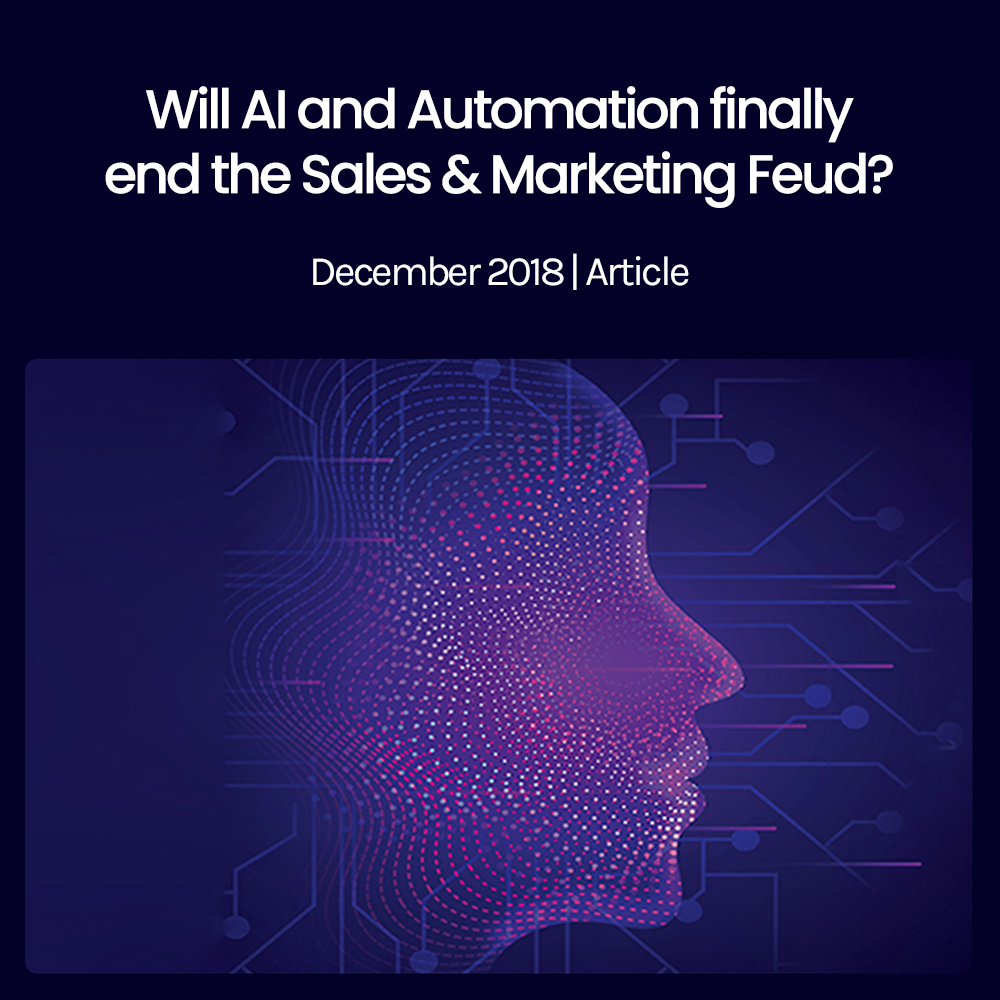
Organizations of today are looking at ‘Digital Transformation’ as their key to innovation, growth, and the discovery and creation of new business models and opportunities. An essential segment of this transformation journey is the adoption and implementation of Artificial Intelligence (AI) and Automation. This adoption leads to a new dynamic in the marketing and sales arena where customer experience, customer acquisition, and customer retention fast become breaking points for effective competition and the overall growth and profitability of any business.
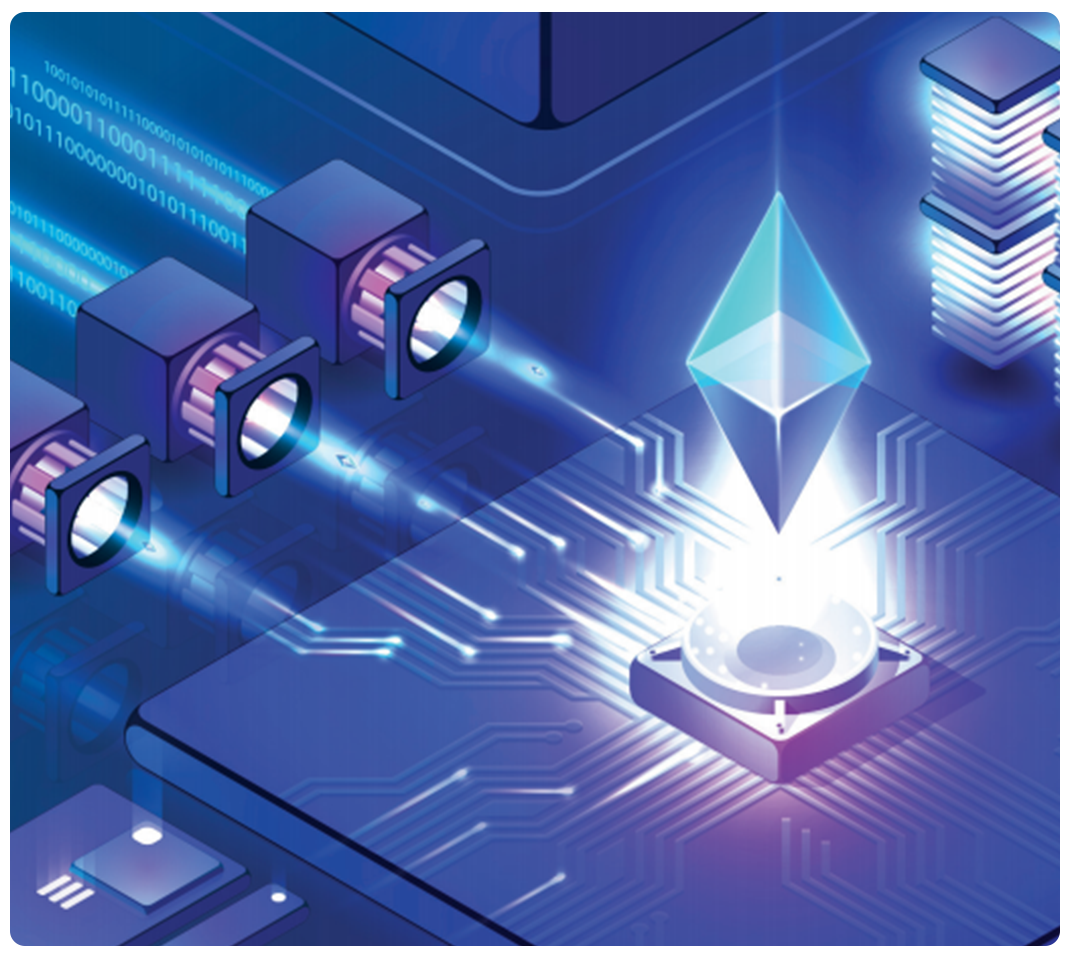 Sales and Marketing have historically been cousins to each other. Born in the same family but want to do it all their own way and eat the whole cake while they are at it too. But the ‘digital’ phenomenon has changed that, or at least it is trying hard to. And the cousins have to entertain this intervention not because they want to, but because their hyperconnected customers now require to be wooed and engaged in a way that is personalized, content-driven, social and mobile. Dynamics that can get complex very quickly and does not leave enough legs for this cousin rivalry to stand on. Still, many ninjas representing each group attempt to hold their old school domains and grudgingly refuse to play ball, or grow up for that matter. Only if they knew, what is about to hit them. A recent lean data survey suggests that “51% of marketers are not satisfied with the level of communication between these two teams and 53% of sales professionals are not pleased with marketing’s support.” More troubling than this is that the American Marketing Association says that “90% of content created by marketing is never used to drive sales”. And if that wasn’t enough, Jeff Ernst in his book ‘The New Rules of Sales Enablement’ points out that “Salespeople spend 30 hours a month searching for and creating their own selling materials”. Now, isn’t this a sad state of affairs. It is a sign of two groups wandering aimlessly and enabling a discord of this sort which can be catastrophic for any organization of any size and squanders resources unnecessarily.
Sales and Marketing have historically been cousins to each other. Born in the same family but want to do it all their own way and eat the whole cake while they are at it too. But the ‘digital’ phenomenon has changed that, or at least it is trying hard to. And the cousins have to entertain this intervention not because they want to, but because their hyperconnected customers now require to be wooed and engaged in a way that is personalized, content-driven, social and mobile. Dynamics that can get complex very quickly and does not leave enough legs for this cousin rivalry to stand on. Still, many ninjas representing each group attempt to hold their old school domains and grudgingly refuse to play ball, or grow up for that matter. Only if they knew, what is about to hit them. A recent lean data survey suggests that “51% of marketers are not satisfied with the level of communication between these two teams and 53% of sales professionals are not pleased with marketing’s support.” More troubling than this is that the American Marketing Association says that “90% of content created by marketing is never used to drive sales”. And if that wasn’t enough, Jeff Ernst in his book ‘The New Rules of Sales Enablement’ points out that “Salespeople spend 30 hours a month searching for and creating their own selling materials”. Now, isn’t this a sad state of affairs. It is a sign of two groups wandering aimlessly and enabling a discord of this sort which can be catastrophic for any organization of any size and squanders resources unnecessarily.
 So now that the case has been made to reunite the extended family, what about trouble within the immediate one? The sibling rivalry of the B2B and the B2C sellers? They too are often in lockstep with each other and the customers/consumers are often confused in the cross-reference between their approaches of selling. But who gets to decide which one is right and who aims to bring harmony among this group? Well, Forrester seems to care a lot about this topic at hand and its 2017 survey of Buyers suggests that “77% of them want integrated customized data and insights as part of the journey”. This means that B2B customers are starting to act more like B2C now (what a shock gave the ease and stickiness the B2C process brings to the table). Forrester again in its 2017 B2B Buying and Selling Online Survey suggests that “71% of B2B buyers say purchasing from a website is more convenient” and “67% of B2B buyers and going online superior to interacting with a salesperson”. I rest my case. But Forrester says more. It goes on to describe the characteristics of B2Bcustomers as Known, Rational, Interdependent, Loyal and the B2C ones as Anonymous, Emotional, Independent, Transactional. It further argues that the new age B2B customer is now, in fact, acting more like a B2C ‘consumer’ with mixed traits out of the two. They list them as Anonymous, Emotional, Interdependent, Considered, Mutable. Forrester says this all in its 2017 Report ‘The Birth of the B2B Consumer’. The paradigm shift Forrester refers to makes it harder for the siblings to align as in essence, it’s a merger of the two but if they too want a shot at the modern-day customer, they will just have to put their heads together and learn to coexist/merge.
So now that the case has been made to reunite the extended family, what about trouble within the immediate one? The sibling rivalry of the B2B and the B2C sellers? They too are often in lockstep with each other and the customers/consumers are often confused in the cross-reference between their approaches of selling. But who gets to decide which one is right and who aims to bring harmony among this group? Well, Forrester seems to care a lot about this topic at hand and its 2017 survey of Buyers suggests that “77% of them want integrated customized data and insights as part of the journey”. This means that B2B customers are starting to act more like B2C now (what a shock gave the ease and stickiness the B2C process brings to the table). Forrester again in its 2017 B2B Buying and Selling Online Survey suggests that “71% of B2B buyers say purchasing from a website is more convenient” and “67% of B2B buyers and going online superior to interacting with a salesperson”. I rest my case. But Forrester says more. It goes on to describe the characteristics of B2Bcustomers as Known, Rational, Interdependent, Loyal and the B2C ones as Anonymous, Emotional, Independent, Transactional. It further argues that the new age B2B customer is now, in fact, acting more like a B2C ‘consumer’ with mixed traits out of the two. They list them as Anonymous, Emotional, Interdependent, Considered, Mutable. Forrester says this all in its 2017 Report ‘The Birth of the B2B Consumer’. The paradigm shift Forrester refers to makes it harder for the siblings to align as in essence, it’s a merger of the two but if they too want a shot at the modern-day customer, they will just have to put their heads together and learn to coexist/merge.
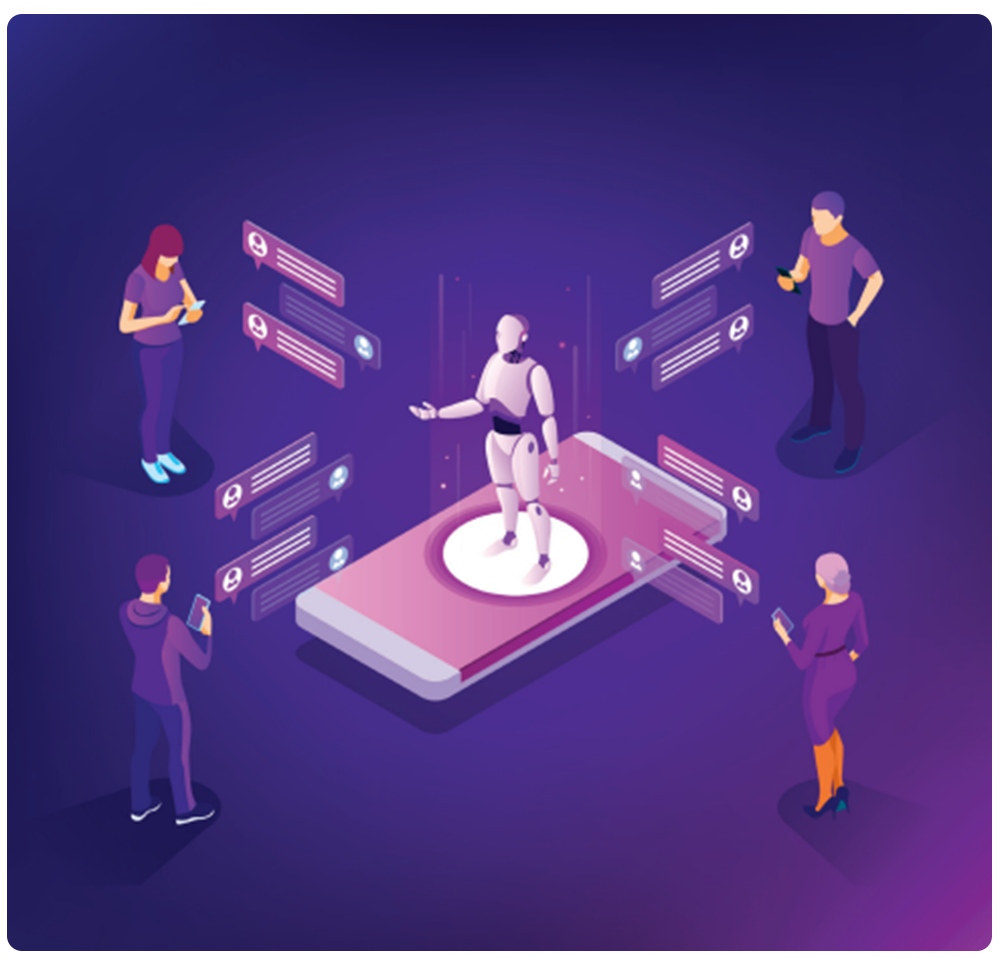 Now, if this wasn’t complicated enough, enter the AI and Automation paradigm into the mix. This paradigm empowers every marketing and sales area with hidden extra firepower to act and play smart (both literally and figuratively). Navigation tactics, broad audiences and product offerings through predictive scoring, engagement paradigms are just the tip of the iceberg of what these intelligence and predictive mechanisms can add on. These mechanisms now have, among other things the capability to scan digital profiles throughout the internet to find leads that match a brand’s ideal prospect. And when it comes to marketing and sales, leads (at least the good ones) are the holy grail. After that, it just needs a little cousin collaboration between the two groups on the back end to engage and close those “perfect” prospects. These predictive engagement tools also determine the type of content that appeals to the type of targeted audience and can be leveraged to connect with them across all the channels for targeted success. Gartner predicts that “By 2020, 85% of interactions between businesses will be executed without any human touch”. An aggressive stance as far as I am concerned but these predictors are a result of Machine Learning and Advanced Analytics that allow the opportunity to provide an unprecedented level of personalized service and a super increase in revenue due to high conversion rates. Human interaction at least for some more years is still key, at least in the developing world. But things change fast these days so we shall see.
Now, if this wasn’t complicated enough, enter the AI and Automation paradigm into the mix. This paradigm empowers every marketing and sales area with hidden extra firepower to act and play smart (both literally and figuratively). Navigation tactics, broad audiences and product offerings through predictive scoring, engagement paradigms are just the tip of the iceberg of what these intelligence and predictive mechanisms can add on. These mechanisms now have, among other things the capability to scan digital profiles throughout the internet to find leads that match a brand’s ideal prospect. And when it comes to marketing and sales, leads (at least the good ones) are the holy grail. After that, it just needs a little cousin collaboration between the two groups on the back end to engage and close those “perfect” prospects. These predictive engagement tools also determine the type of content that appeals to the type of targeted audience and can be leveraged to connect with them across all the channels for targeted success. Gartner predicts that “By 2020, 85% of interactions between businesses will be executed without any human touch”. An aggressive stance as far as I am concerned but these predictors are a result of Machine Learning and Advanced Analytics that allow the opportunity to provide an unprecedented level of personalized service and a super increase in revenue due to high conversion rates. Human interaction at least for some more years is still key, at least in the developing world. But things change fast these days so we shall see.
But how much can AI and Automation help in keeping the two groups together anyways? And what happens when they really do work together? A study by SiriusDecisions shows, “B2B firms with tightly aligned sales and marketing operations achieved 24% larger three-year revenue growth, and 27% faster three-year profit growth.” Also, Marketingprofs, states that “Organizations with tightly aligned sales and marketing functions enjoyed 36% higher customer retention rates and 38% higher sales win rates.” When marketing and sales teams work together, costs decrease, metrics soar, and sales cycles are more concise. Gone are the days when marketing handed over a lead to sales and the process moved on from there. It’s all about Customer journeys now and with the way, Enterprise Software giants like Salesforce, Microsoft, Oracle, and others are tightly integrating all aspects of sales, service, and marketing and putting a wrapper of AI on top/middle, it is just a matter of time when no one will know where marketing ends and sales really begin. It’s already happening in some instances as forward-thinking organizations are subscribing the same instances of the same software to both marketing and sales teams in pursuit and engagement of the same band of customers. This leads to one combined ‘customer’ funnel that belongs to both sales and marketing.
 So where does this all go from here? Will Sales and Marketing ever be on that one page? Or will the cousins split again? It’s hard to tell really. The software systems seem to have carved a path for businesses to operate the two groups as closely as possible. Even combine it where it can. But traditionalists that subscribe to theories of yesteryears are still not there. I guess it’s a wait and see the game as to who will overtake who, but one thing is for sure, AI and Automation is here to stay and it is doing a damn good job of playing the mediator/interpreter between the siblings and the cousins. Who knows, it just might keep everyone together. What a noble being if you ask me. And here we thought machines were out to get us :-)
So where does this all go from here? Will Sales and Marketing ever be on that one page? Or will the cousins split again? It’s hard to tell really. The software systems seem to have carved a path for businesses to operate the two groups as closely as possible. Even combine it where it can. But traditionalists that subscribe to theories of yesteryears are still not there. I guess it’s a wait and see the game as to who will overtake who, but one thing is for sure, AI and Automation is here to stay and it is doing a damn good job of playing the mediator/interpreter between the siblings and the cousins. Who knows, it just might keep everyone together. What a noble being if you ask me. And here we thought machines were out to get us :-)

Sales and Marketing have historically been cousins to each other. Born in the same family but want to do it all their own way and eat the whole cake while they are at it too. But the ‘digital’ phenomenon has changed that, or at least it is trying hard to. And the cousins have to entertain this intervention not because they want to, but because their hyperconnected customers now require to be wooed and engaged in a way that is personalized, content-driven, social and mobile. Dynamics that can get complex very quickly and does not leave enough legs for this cousin rivalry to stand on. Still, many ninjas representing each group attempt to hold their old school domains and grudgingly refuse to play ball, or grow up for that matter. Only if they knew, what is about to hit them. A recent lean data survey suggests that “51% of marketers are not satisfied with the level of communication between these two teams and 53% of sales professionals are not pleased with marketing’s support.” More troubling than this is that the American Marketing Association says that “90% of content created by marketing is never used to drive sales”. And if that wasn’t enough, Jeff Ernst in his book ‘The New Rules of Sales Enablement’ points out that “Salespeople spend 30 hours a month searching for and creating their own selling materials”. Now, isn’t this a sad state of affairs. It is a sign of two groups wandering aimlessly and enabling a discord of this sort which can be catastrophic for any organization of any size and squanders resources unnecessarily.

So now that the case has been made to reunite the extended family, what about trouble within the immediate one? The sibling rivalry of the B2B and the B2C sellers? They too are often in lockstep with each other and the customers/consumers are often confused in the cross-reference between their approaches of selling. But who gets to decide which one is right and who aims to bring harmony among this group? Well, Forrester seems to care a lot about this topic at hand and its 2017 survey of Buyers suggests that “77% of them want integrated customized data and insights as part of the journey”. This means that B2B customers are starting to act more like B2C now (what a shock gave the ease and stickiness the B2C process brings to the table). Forrester again in its 2017 B2B Buying and Selling Online Survey suggests that “71% of B2B buyers say purchasing from a website is more convenient” and “67% of B2B buyers and going online superior to interacting with a salesperson”. I rest my case. But Forrester says more. It goes on to describe the characteristics of B2Bcustomers as Known, Rational, Interdependent, Loyal and the B2C ones as Anonymous, Emotional, Independent, Transactional. It further argues that the new age B2B customer is now, in fact, acting more like a B2C ‘consumer’ with mixed traits out of the two. They list them as Anonymous, Emotional, Interdependent, Considered, Mutable. Forrester says this all in its 2017 Report ‘The Birth of the B2B Consumer’. The paradigm shift Forrester refers to makes it harder for the siblings to align as in essence, it’s a merger of the two but if they too want a shot at the modern-day customer, they will just have to put their heads together and learn to coexist/merge.

Now, if this wasn’t complicated enough, enter the AI and Automation paradigm into the mix. This paradigm empowers every marketing and sales area with hidden extra firepower to act and play smart (both literally and figuratively). Navigation tactics, broad audiences and product offerings through predictive scoring, engagement paradigms are just the tip of the iceberg of what these intelligence and predictive mechanisms can add on. These mechanisms now have, among other things the capability to scan digital profiles throughout the internet to find leads that match a brand’s ideal prospect. And when it comes to marketing and sales, leads (at least the good ones) are the holy grail. After that, it just needs a little cousin collaboration between the two groups on the back end to engage and close those “perfect” prospects. These predictive engagement tools also determine the type of content that appeals to the type of targeted audience and can be leveraged to connect with them across all the channels for targeted success. Gartner predicts that “By 2020, 85% of interactions between businesses will be executed without any human touch”. An aggressive stance as far as I am concerned but these predictors are a result of Machine Learning and Advanced Analytics that allow the opportunity to provide an unprecedented level of personalized service and a super increase in revenue due to high conversion rates. Human interaction at least for some more years is still key, at least in the developing world. But things change fast these days so we shall see.
But how much can AI and Automation help in keeping the two groups together anyways? And what happens when they really do work together? A study by SiriusDecisions shows, “B2B firms with tightly aligned sales and marketing operations achieved 24% larger three-year revenue growth, and 27% faster three-year profit growth.” Also, Marketingprofs, states that “Organizations with tightly aligned sales and marketing functions enjoyed 36% higher customer retention rates and 38% higher sales win rates.” When marketing and sales teams work together, costs decrease, metrics soar, and sales cycles are more concise. Gone are the days when marketing handed over a lead to sales and the process moved on from there. It’s all about Customer journeys now and with the way, Enterprise Software giants like Salesforce, Microsoft, Oracle, and others are tightly integrating all aspects of sales, service, and marketing and putting a wrapper of AI on top/middle, it is just a matter of time when no one will know where marketing ends and sales really begin. It’s already happening in some instances as forward-thinking organizations are subscribing the same instances of the same software to both marketing and sales teams in pursuit and engagement of the same band of customers. This leads to one combined ‘customer’ funnel that belongs to both sales and marketing.

So where does this all go from here? Will Sales and Marketing ever be on that one page? Or will the cousins split again? It’s hard to tell really. The software systems seem to have carved a path for businesses to operate the two groups as closely as possible. Even combine it where it can. But traditionalists that subscribe to theories of yesteryears are still not there. I guess it’s a wait and see the game as to who will overtake who, but one thing is for sure, AI and Automation is here to stay and it is doing a damn good job of playing the mediator/interpreter between the siblings and the cousins. Who knows, it just might keep everyone together. What a noble being if you ask me. And here we thought machines were out to get us :-)
